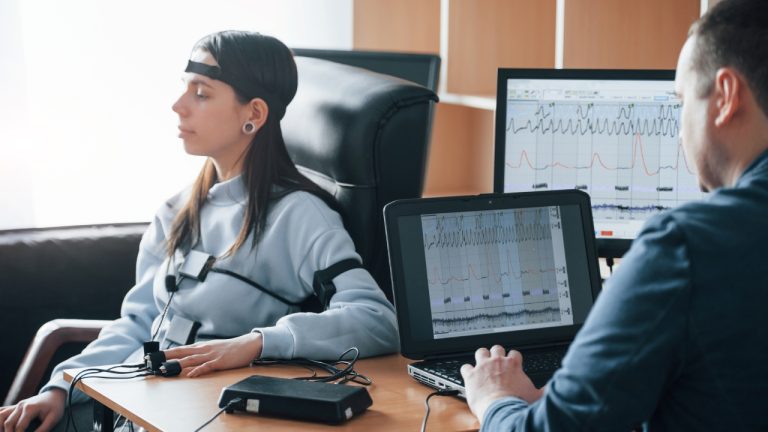Drug and Alcohol Testing Services Overview
Understanding the landscape of drug and alcohol testing services is crucial in various domains, including workplace safety and rehabilitation programs. We delve into the significance of accurate testing and the types of drug testing methods commonly employed in different contexts.
Importance of Accurate Testing
The reliability of drug and alcohol testing results is paramount in ensuring the effectiveness of substance abuse prevention programs. To uphold this reliability, certified testing laboratories play a vital role in conducting tests accurately and promptly. The use of an HHS certified laboratory not only ensures adherence to standardized protocols but also enhances the credibility of the testing process.
Moreover, the involvement of a Medical Review Officer (MRO) further bolsters the accuracy of test interpretations. MROs are trained professionals who scrutinize test results in conjunction with an individual’s medical history, ensuring that any reported findings are thoroughly assessed for accuracy and consistency.
Types of Drug Testing Methods
Drug testing methods encompass various techniques used to detect the presence of substances in biological specimens. Among the common methods employed are urine drug testing, hair strand testing, and breath alcohol testing.
| Drug Testing Method | Specimen Tested |
|---|---|
| Urine Drug Testing | Urine |
| Hair Strand Testing | Hair |
| Breath Alcohol Testing | Exhaled Breath |
Federal agency drug tests typically target five primary categories of drugs, including amphetamines, cocaine, marijuana, opiates/opioids, and phencyclidine (PCP). Moreover, the frequent calibration of breath alcohol testing devices is essential to maintain the accuracy and reliability of test results (Rapid Test Center).
By familiarizing ourselves with these testing methodologies, we can appreciate the foundation upon which drug and alcohol testing services operate, emphasizing the need for precise and dependable results in promoting accountability and compliance within diverse settings.
Factors Affecting Test Accuracy
In the realm of drug and alcohol testing, the accuracy and reliability of the results are paramount. Several key factors come into play when considering the precision of these tests. Among the factors that can influence the accuracy of drug and alcohol testing services are the calibration of testing devices, the influence of the specimen type used for testing, and the training of testing personnel.
Calibration of Testing Devices
The precision of drug and alcohol testing devices is contingent on proper calibration. Calibration should be performed regularly, typically on an annual basis, by qualified technicians to ensure accurate results. Failure to calibrate testing devices correctly can lead to unreliable outcomes, compromising the integrity of the testing process.
Influence of Specimen Type
The type of specimen used for drug and alcohol testing can significantly impact the accuracy of the results. Urine drug testing, for instance, is a commonly employed method due to its ability to detect recent drug usage and its cost-effectiveness. However, the accuracy of urine drug testing can be compromised by sample adulteration, emphasizing the need for careful specimen collection and handling (Rapid Test Center).
Training of Testing Personnel
The proficiency and training of personnel conducting drug and alcohol testing are crucial in ensuring accurate test results. Proper training equips testing personnel with the necessary skills to conduct tests correctly, handle specimens appropriately, and interpret results accurately. Comprehensive training programs help testing personnel stay updated on the latest testing protocols, ensuring adherence to rigorous testing standards.
By addressing factors such as device calibration, specimen type considerations, and personnel training, drug and alcohol testing services can uphold the highest standards of accuracy and reliability. These measures play a pivotal role in promoting workplace safety, regulatory compliance, and public health by ensuring the integrity and precision of drug and alcohol testing procedures.
Common Drug Testing Methods
When it comes to drug and alcohol testing services, choosing the right testing method is essential to ensure reliable results. There are several common methods used, each with its own advantages and detection capabilities. In this section, we will explore three widely used drug testing methods: urine drug testing, hair strand testing, and breath alcohol testing.
Urine Drug Testing
Urine testing is one of the most common and widely accepted forms of drug and alcohol testing. It is approved for federally-mandated testing and is effective in detecting drug metabolites that are excreted through the urine. Urine testing is ideal for identifying recent drug use and is often used in pre-employment screening and ongoing monitoring programs.
One of the primary benefits of urine testing is its wide detection window for various substances. While detection times can vary based on factors such as drug type and individual metabolism, urine testing can typically detect drug use within a few days to a week after consumption.
Hair Strand Testing
Hair testing is an advanced method that offers a longer detection window compared to urine and other testing methods. With a detection period of up to 90 days, hair testing provides valuable insights into both the frequency and recency of drug use. This makes it particularly useful in monitoring substance use over an extended period.
Beyond its extended detection window, hair testing offers the advantage of non-invasiveness and ease of sample collection. A small sample of hair is collected from the individual, making the process simple and convenient for both the tester and the individual being tested.
Breath Alcohol Testing
Breath alcohol testing is commonly utilized in workplace settings to determine the immediate impairment levels of individuals due to alcohol consumption. Evidential breath testing devices provide accurate and instantaneous results, allowing for timely decisions regarding an individual’s fitness for duty.
One of the key advantages of breath alcohol testing is its convenience and rapid results. Compared to other testing methods, such as blood testing, breath testing offers a non-invasive and efficient way to assess alcohol levels. It is particularly valuable in safety-sensitive industries where maintaining sobriety is crucial for workplace safety.
By understanding the strengths and limitations of these common drug testing methods, testing services can deliver accurate and reliable results in various settings. Whether utilizing urine testing for its wide detection window, hair testing for long-term monitoring, or breath alcohol testing for immediate screening, each method plays a vital role in ensuring the safety and integrity of drug and alcohol testing practices.
Accuracy and Reliability in Testing Services
When it comes to providing accurate and reliable drug and alcohol testing services for reliable results, there are key components that play a critical role in ensuring the integrity of the testing process. Two essential elements in this regard are the role of HHS-certified laboratories and the interpretation provided by a Medical Review Officer (MRO).
Role of HHS-Certified Laboratories
HHS-certified laboratories are instrumental in maintaining high standards of drug testing services. These laboratories adhere to rigorous guidelines set forth by the Substance Abuse and Mental Health Services Administration (SAMHSA) to ensure the reliability, accuracy, and quality assurance of the testing procedures conducted (DrugScan). By utilizing an HHS-certified laboratory, testing services can be assured of meeting federal regulations and industry standards.
These laboratories follow standardized protocols for specimen collection, analysis, and reporting, emphasizing consistency and precision in every step of the testing process. This commitment to excellence helps instill confidence in the accuracy of the test results and ensures that they are reliable for informed decision-making.
Medical Review Officer Interpretation
In drug and alcohol testing services, the interpretation of test results by a Medical Review Officer (MRO) is paramount to the accuracy and reliability of the findings. The MRO is responsible for reviewing and evaluating federally-regulated test results to verify their validity and authenticity (SAMHSA).
The MRO is a licensed physician with specialized training in substance abuse and addiction medicine. Their expertise allows them to assess test results comprehensively, taking into account medical history, prescribed medications, and other relevant factors that could impact the outcome of the test. This thorough review process helps to prevent false-positive results and ensures that any discrepancies are appropriately addressed.
By partnering with HHS-certified laboratories and engaging the expertise of Medical Review Officers, drug and alcohol testing services can deliver reliable results that adhere to the highest standards of accuracy and integrity. These measures not only promote workplace safety and regulatory compliance but also contribute to the overall efficacy of substance abuse treatment programs for individuals seeking help and support.
Drug Testing in Safety-Sensitive Industries
In safety-sensitive industries, drug and alcohol testing play a critical role in ensuring the safety and well-being of employees and the public. Various regulatory bodies have established specific requirements and standards to govern drug testing practices in these sectors. Let’s explore the drug testing requirements set forth by the Department of Transportation (DOT), Department of Defense (DOD), and Nuclear Regulatory Commission (NRC).
Department of Transportation (DOT) Requirements
The Department of Transportation (DOT) mandates alcohol testing for safety-sensitive occupations such as trucking, pipeline, aviation, maritime, railroad, and transit employees. DOT alcohol testing includes Breath Alcohol Concentration (BrAC) tests to screen for alcohol impairment DISA. Specific procedures and consequences are in place for different BrAC levels detected during testing to ensure the safety of transportation operations and the public.
Department of Defense (DOD) Regulations
Employees and contractors working within the Department of Defense (DOD) are subject to stringent drug-testing requirements. DOD contractors with access to sensitive, classified information must adhere to drug-free workplace policies under the Drug-Free Workplace regulations SAMHSA. These regulations aim to maintain a safe and secure environment, especially in defense-related operations where national security is paramount.
Nuclear Regulatory Commission (NRC) Standards
The Nuclear Regulatory Commission (NRC) establishes and enforces standards for drug and alcohol testing within nuclear facilities and industries. These standards are designed to ensure the safety of personnel working in sensitive environments where even a slight impairment could have catastrophic consequences SAMHSA. Compliance with NRC regulations is essential to maintain the integrity and security of nuclear operations and facilities.
Drug testing in safety-sensitive industries is not only mandated by regulatory bodies but is also crucial for maintaining a safe work environment and preventing accidents or incidents that could pose significant risks to individuals and the surrounding communities. By adhering to the specific requirements set forth by the DOT, DOD, and NRC, organizations in these industries can uphold the highest standards of safety and accountability in their operations.
Confidentiality and Legal Considerations
When it comes to handling drug test results, confidentiality is of utmost importance. In accordance with guidelines from the Equal Employment Opportunity Commission (EEOC), any information obtained from drug tests, including the presence of lawfully prescribed drugs, must be treated as confidential medical records. It is advised that all drug test results be maintained in a separate confidential medical file, distinct from general employee records. The sharing of results should be limited to individuals on a need-to-know basis to safeguard employee privacy and adhere to legal standards.
Handling of Drug Test Results
Confidentiality in handling drug test results is crucial to protect employee privacy and comply with regulations. Employers should develop clear policies and procedures for the secure storage and disclosure of drug test results. Safeguards should be in place to prevent unauthorized access and ensure that information is only shared with individuals who have a legitimate reason to know the results.
State Drug Testing Laws
State drug testing laws and privacy regulations may impose additional requirements on the handling of drug test results, further strengthening the need for confidentiality. Employers should be aware of state-specific laws that govern drug testing practices and ensure compliance to avoid legal complications. Consulting with legal counsel can help in navigating the complexities of state regulations in relation to drug testing.
Federal Regulations on Testing Practices
Federal regulations, such as those outlined by the U.S. Department of Transportation (DOT), dictate specific rules for drug testing procedures and result disclosure. Under DOT regulations, drug test results may be disclosed for investigatory proceedings and other necessary purposes. Employers subject to DOT regulations must adhere to the guidelines to maintain compliance and uphold the integrity of their drug testing programs.
Navigating the landscape of confidentiality and legal considerations in drug and alcohol testing services requires a thorough understanding of applicable laws and a commitment to upholding best practices. By prioritizing the confidentiality of drug test results and adhering to relevant regulations, organizations can maintain trust with employees and ensure the integrity of their testing processes.







